
The New Gold Rush: The Riches of Space Beckon!
by
Joseph N. Pelton
Published 5 Nov 2016
Without the geo-magnetosphere and the atmosphere, current levels of solar radiation would cause major genetic mutations, and perhaps kill off most life forms as we know them. Further coronal mass ejections without the protective shielding of the Van Allen Belts as formed by the magnetic poles could perhaps destroy all of the power as well as the electronic, communications and information networks that we have built to sustain modern life. As we create more and more elaborate and sophisticated energy grids, IT and communications networks, as well as pipeline distribution systems we actually become more and more vulnerable to massive solar storms . Actually, the probability of modern industrial society being wiped out by a massive coronal mass ejection is far greater than the likelihood of it being wiped out by a wayward space rock.
…
The south magnetic pole, not to be outdone, has headed north. These excursions, as confirmed by NASA’s MMS satellites and ESA’s Swarm satellites, are bad news. Some computer profiles prepared in Germany suggest that the Van Allen Belts might be reduced to 15 % of their effectiveness in warding off a major coronal mass ejection . And asteroids, comets and coronal mass ejections are not the only hazards. Solar flares can cause genetic damage and elevate the incidence of cancer. Each year the number of derelict spacecraft and upper stage launchers left circling our planet continues to rise. Space debris continues to accumulate, with some 23,000 space objects larger than a baseball being tracked.
…
The greatest danger of all comes from the ion storms that can come from the Sun in the form of coronal mass ejections (see Fig. 7.2). In the middle of the nineteenth century, the risks to electrical systems were small because such systems did not exist. The Montreal event of 1989 took out electrical systems from Chicago to Montreal, and the Halloween event of 2003 damaged the electrical grid in Scandinavia. These are real-world events that are indicators that we are today increasingly vulnerable to major coronal mass ejections. Heavy duty CMEs are more powerful than a nuclear blast by far. They can create natural electromagnetic pulses (EMPs) that can outdo the biggest of manmade bombs.

Sunfall
by
Jim Al-Khalili
Published 17 Apr 2019
SUNFALL JIM AL-KHALILI Contents Prologue PART I: Magnetosphere Chapter 1 Chapter 2 Chapter 3 Chapter 4 Chapter 5 Chapter 6 Chapter 7 Chapter 8 Chapter 9 Chapter 10 Chapter 11 Chapter 12 PART II: Coronal Mass Ejection Chapter 13 Chapter 14 Chapter 15 Chapter 16 Chapter 17 Chapter 18 Chapter 19 Chapter 20 Chapter 21 Chapter 22 Chapter 23 Chapter 24 Chapter 25 Chapter 26 Chapter 27 Chapter 28 Interlude Chapter 29 Interlude PART III: The ODIN Project Chapter 30 Chapter 31 Chapter 32 Chapter 33 Chapter 34 Chapter 35 Chapter 36 Chapter 37 Chapter 38 Chapter 39 Chapter 40 Chapter 41 Chapter 42 Chapter 43 Chapter 44 Chapter 45 Chapter 46 Chapter 47 Technical Note on Dark Matter Acknowledgements ABOUT THE AUTHOR JIM Al-Khalili OBE, FRS is a quantum physicist, author and broadcaster based at the University of Surrey, where he holds a joint chair in physics and the public engagement in science.
…
Now, four days later, with the carcass cleaned to the bone, he used its hollowed-out skull to cook what little quantity of root vegetables and grasses he had been able to find before the storm set in. But his hunger was back again. Two weeks later, with the storm showing no signs of abating, he too would die, but of starvation rather than the fatal radiation exposure from the powerful coronal mass ejection that had taken the lives of the rest of his tribe, the shelter of his cave offering him the cruel protection that had pointlessly prolonged his life. He died oblivious to how special he would become. Many millennia later, when his remains were found, no one would know that he had indeed been the last of his kind to survive in northern Eurasia.
…
In many parts of the world it was becoming so bad that some people were reluctant to venture outside their own homes at all these days, even at night, so as not to risk unnecessary exposure to the increasingly powerful cosmic radiation. Many had micro sensors embedded under their skin to monitor the presence of high-energy particles and to alert them if it reached hazardous levels. But when it came to dangerous radiation from space, nothing could compete with a well-aimed blast from a coronal mass ejection. Until a few years ago, these enormous bubbles of hot plasma spat out by the Sun were of interest only to solar physicists. Sarah recalled trying to explain to her father why she found the subject so fascinating. ‘What’s the worry?’ he’d argued. ‘After all, the Earth has survived just fine for the past however many gazillion years without the Sun frying us.’
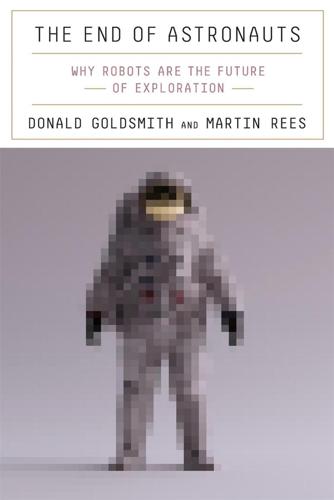
The End of Astronauts: Why Robots Are the Future of Exploration
by
Donald Goldsmith
and
Martin Rees
Published 18 Apr 2022
Index Aldrin, Buzz, 41 Angel, Roger, 30 Antarctic treaty, 134–136, 138, 139 Apollo program, 1, 5, 12, 14, 24, 32, 51–54, 65, 68, 82, 116, 119, 136 Arabidopsis thaliana, 86 Armstrong, Neil, 110 artificial intelligence, 8, 62–64, 81, 82, 110–112, 146 asteroids, 24, 25, 38, 46, 54, 88, 94–104, 109, 138, 148 astrobiologists, 68 astronauts: on asteroids, 94–104; compared to robots, 11, 64, 81–83, 92, 93, 103, 114, 146; construction by, 58; contamination by, 67, 68; costs of, 17, 22, 23, 30, 33, 34, 64, 115–123, 126; discoveries, 54, 55, 61; in Earth orbit, 31, 34, 35, 40, 42; hazards to, 14, 29, 42–45, 61, 83–85; as heroes, 1; inspiration from, 6–8, 10, 11, 13, 33; loss of, 18, 31; manufacturing by, 36, 37, 58; on Mars, 11, 13, 14, 24, 38, 78, 81, 114, 147, 149; on moon, 4, 5, 20, 24, 37, 50–55, 58, 65–68, 114, 119–121, 147, 148; in outer solar system, 149; requirements of, 26, 77, 78, 86, 115–118; worldwide funding, 123–129 Atlantic Monthly, 75 Bandyopadhyay, Saptoshi, 58 Bennu, 95, 97 Beresheet, 70 Berra, Yogi, 26 Bezos, Jeff, 38, 39, 90, 99, 108, 111, 113, 131, 148 Biosphere 2, 91 Biosphere 3, 91 Blue Origin, 39, 83, 120 Bohr, Niels, 26 Bradford Industries, 101 Branson, Richard, 38 Bridenstine, James, 142 Buck Rogers, 18 Burrough, Edgar Rice, 76 Byers, Michel, 143 cancer, 1, 44, 45, 63, 85, 110 carbonaceous chondrites, 96, 97 carbon dioxide: on Mars, 76, 78, 86, 90; on Venus, 92 Carter, Jimmy, 140 Cassini-Huygens, 24, 126 Ceres, 27, 94, 148, 149 Cernan, Eugene, 54, 61 Challenger, 31 Chandrayaan, 52, 55, 129 Chang’e 1, 52 Chang’e 3, 52 Chang’e 4, 52, 125 Chang’e 5, 53, 54, 125 China, 7, 19, 32, 37, 52, 53, 56, 65–67, 78, 99, 123–125, 129 Clark, Alvan, 75 Clementine, 51, 55 CMEs. See coronal mass ejections colonies, 88; on Mars, 39, 75, 86, 88–92, 104; on moon, 39, 50, 55, 57, 72, 75, 88, 97; in space, 39, 90, 91, 104–113 Columbia, 31, 121 Comet Cheryumov-Gerasimov, 126 Commercial Lunar Payload Services, 67 Concorde, 14 Consensys, 101 contamination, 77, 88 coronal mass ejections, 43, 44, 84 cosmic rays, 43, 44, 84 COSPAR, 71 Crawford, Ian, 64 Cruz, Ted, 99 CSPAN, 20 Cupola observatory, 126 Curiosity rover, 18, 78, 79, 82, 116 Daniels, Mitch, 21, 149, 150 Dawn spacecraft, 149 Deimos, 27 deuterium, 59 dinosaurs, 95, 103 DNA, 68, 70, 73, 87, 88 Dragon, 37, 38, 120, 128 Dragonfly, 79 Dula, Art, 139, 140 Durante, Marco, 84 Eliot, T.S., 144 Enceladus, 24, 148, 149 escape velocity, 27, 28, 30 Europa, 24, 148, 149 European Space Agency (ESA), 5, 24, 32, 37, 51, 65, 81, 89, 121, 125–128, 149 Executive Order 13914, 141, 142 exploration, motivations, 2, 14, 88 Falcon, 34, 38, 120, 122 Flammarion, Camille, 57, 75 Franklin probe, 127 Gagarin, Yuri, 4, 33 gamma rays, 44 Gemini, 32 geostationary orbits, 25, 28 Glenn, John, 4 Goddard, Robert, 2, 3 Goddard Space Flight Center, 2 gold, 98, 99, 101–103 gravitational force, 29, 41, 60, 78, 94, 99 gravitational well, 26–29, 56, 94, 99, 102, 121 greenhouse effect, 92 Grunsfeld, John, 91, 92 habitats, 6, 23–25, 32, 35, 39; on Mars, 39, 75, 85, 86, 89, 92; on moon, 50, 55, 57, 72, 75, 97; in space, 32, 35, 105–109, 111 Hawking, Stephen, 108, 148 Hayabusa, 96 helium-3, 59–61; helium-4, 59–61 high-energy particles, 1, 28, 43, 44, 57, 60, 61, 69, 106 Hoffman, Jeffrey, 82 Hope spacecraft, 78 Hubble Space Telescope, 1, 17, 41, 82, 126 ice: on asteroids, 97; on Enceladus, 149; on Europa, 149; on Mars, 86, 92; on moon, 52, 55–57 India, 7, 37, 52, 55, 57, 129 Infrared Space Telescope, 126 Ingenuity, 78, 79 InSight, 78 Institute for Defense Analyses, 118 International Aeronautical Congress, 108 International Court of Justice, 135, 137 International Lunar Research Station, 65 International Seabed Authority, 133 International Space Station, 30–38, 42, 82, 84, 101, 117, 122–128 interstellar travel, 113 Italian Space Agency, 121 Itokawa, 96 Japanese Space Agency, 5, 37, 96, 121, 129, 130 JAXA, 5 Jezero crater, 79, 87 John, Elton, 93 Johnson, Lyndon, 45 JUICE mission, 89 Juno, 24 Jurvetson, Steve, 39 Kelly, Scott, 33 Kennedy, John, 4, 10, 13, 119 Kepler, Johannes, 49 Kessler, David, 47 Kessler effect, 47, 48 Kimball, Dan, 124 Korolev, Sergei, 4 Lagrange points, 108; L4 and L5, 25, 144 Law of the Sea Convention, 133 laws in space, 131–133, 136–139, 143 LCROSS, 55 Leary, Timothy, 106 Lederberg, Joshua, 71 Leonov, Alexei, 4 Levania, 49 Levinthal, Elliott, 71 Lewis, John, 110 low-Earth orbit (LEO), 6, 25, 28, 29, 31–37, 41–48, 84, 101, 103, 120–122, 125, 126, 129, 151 Lowell, Percival, 75, 76 Luna program, 51, 52 Lunar and Planetary Institute, 17 Lunar Prospector, 51 Lunar Reconnaissance Orbiter, 51 lunar rover, 62, 63, 129 Mangalyaan, 129 manufacturing in space, 35–37, 58 Mars, atmosphere, 78, 79, 86, 90; colonization, 88, 91, 104; humans on, 15, 81–85, 87–93; ice on, 86, 92; robots on, 17, 77, 82, 88, 116, 118, 127, 147, 149; water on, 75, 76, 86, 90, 93, 149 Marshall Space Flight Center, 37 Mars One, 117, 118 Martian, The, 86, 116 McAuliffe, Christa, 32 McKay, Chris, 83 McPhee, John, 77 Melroy, Pamela, 125 Mercury, 5, 74 Meteorites, 53, 80, 97 MeV, 44 microwaves, 46 mining: on asteroids, 23, 99–103, 107; on moon, 57, 61, 63, 110 Mir, 40 moon: colonies on, 39, 50, 55, 57, 72, 75, 88, 97; formation of, 50, 53; habitats on, 50, 55, 57, 72, 75, 97; humans on, 4, 12, 20, 51, 54–66; mining on, 57, 61, 63, 110; peaks of eternal light, 57, 147; robots on, 51–53, 59, 61–67 Moon Treaty, 137–140 Morton, Oliver, 13 Mount Everest, 12 Musk, Elon, 34, 38, 90, 99, 108, 120, 131, 148 Mutations, 44 National Academy of Sciences, 21, 150 National Aeronautics and Space: Administration (NASA), 2, 5, 15, 18–24, 31–39; limiting astronaut risks, 44, 47, 68; missions to Mars, 79–81, 85; to moon, 51, 52, 55, 65–68 Near-Earth orbit (NEO).
…
The sun produces a steady flow of high-energy particles, engagingly named the “solar wind”—mainly protons, electrons, and the nuclei of helium atoms. Life on Earth has evolved with a tolerance for the small amount of this incoming flux that penetrates to ground level, but on occasion the sun produces giant clouds of much more energetic, more dangerous subatomic fragments. These coronal mass ejections (CMEs), typically signaled by blazes of light called solar flares, erupt from the solar corona, the layer of highly rarefied, million-degree gases above the sun’s surface. Although the particles of CMEs have speeds measured in millions of miles per hour, those directed toward our planet require several days to reach the Earth, where they disrupt radio communications and even the electric grid, while also stimulating stunning auroral displays.
…
Higher-energy particles tend to be rarer than lower-energy ones, a fortunate circumstance since higher energies imply greater capacity for damage. Measured in units of MeV (1 million electron volts), ordinary solar wind particles have energies around 1 / 1000 MeV. Solar storm particles have energies close to 1 MeV, and the particles from coronal mass ejections come in at 10 to 100 MeV. Cosmic ray particles, potentially the most damaging, appear in the 100–1000 MeV range. Thus the particles’ energies differ by factors as large as 1 million. For every cosmic ray particle with an energy of 1000 MeV that arrives at Earth, more than a billion ordinary particles arrive in the solar wind.

Practical Doomsday: A User's Guide to the End of the World
by
Michal Zalewski
Published 11 Jan 2022
Numbers 2FA (two-factor authentication), 108 3M gasmaks, 177 3M respirators, 175 9-11 attacks, 26–27 9mm Luger, 214 28 Days Later, 32 .38 Special, 214 A Abine, 110 accidental injuries car accidents, 96–98 firearms, 196, 217–218 industrial accidents, 19–20, 177 statistics on, 12–13 action plan, 121–125 Acxiom, 110 addiction, 99–100 adverse judgments, 69–70 advertising industry, 110 AGI (artificial general intelligence), 42 AI winter, 42 AIDS, 32 alarm systems, 112 alcohol use, 100–101 Alinco, 188 alkaline batteries, 154–155 allergies, 150 aluminum zirconium tetrachlorohydrex gly, 149 amateur radio, 188–189 ammunition, 217 amoxicillin, 151 anesthetics miconazole nitrate, 150 animal-borne diseases, 176 antibiotics, 151 antifungal cream, 150 anti-itch cream, 150 antiperspirant, 149 antivirus programs, 106 Anytime Mailbox, 111 apocalypse, predictions of, 30–31 appliances, 152–159 APRS (Automatic Packet Reporting System), 188–189 Aquatabs, 134 Aqua-Tainer products, 133 AR-15, 215–216 Arm & Hammer, 149 Armero volcano eruption, 35 artificial intelligence, 31, 42 asteroids, 34 asthma, 150 atom bombs, 30–31, 39–40, 178–180 Augason Farms, 141 auto accidents, 96–98 auto insurance, 51–52 auto repairs, 163–164 automated billing, 51 automatic center punches, 164 Automatic Packet Reporting System (APRS), 188–189 avian flu, 26 B backyard gardens, 144 bail-ins, 22 bailouts, 68–69 baking soda, 148 ballistic vests, 129–130 bank accounts, 68–69, 76–77 banking crises, 22, 68–69 Bankrate.com, 10 Banqiao dam failure, 20 BaoFeng, 188 Barbot, Oxiris, 25 barter, 58–59, 73–74 batteries, 154–155, 163 bear spray, 171 BeenVerified, 110 Beirut nitrate explosion, 20 benzalkonium chloride (BZK) wipes, 149 benzocaine ointments, 151 The Bet (Sabin), 8 Bhopal disaster, 20 bicycles, 166 billionaires, 73 bird shot, 217 birth certificates, 166–167 Bitcoin, 66–68 Black Death, 32, 176 black holes, 35 bleeding, 151, 177 blizzards, 18 blockchain, 67 blunt instruments, 208 Bogle, John C., 80–81 bonds, 77–78 books, 191–192 bows, 208–209 brain in a jar, 42 break-ins, 111–112, 201 bromadiolone, 177 bromethalin, 177 Brooks, Max, 30 buckshot, 217 bug-out situations, 165–171 bulletproof vests, 129–130 bullets, 217 Bureau of Justice Statistics, 13 burglaries, 13, 111–112, 201 Butte fire complex, 18 BZK (benzalkonium chloride) wipes, 149 C caffeine pills, 150 California Consumer Privacy Act (CCPA), 111 California Gun Laws (Michel and Cubeiro), 196 calorie needs, 138–139 calorie restriction, 117–118 cameras, 201 camping, 167–168, 171 Canberra MRAD113, 179 candles, 154 Capital in the Twenty-First Century (Piketty), 72 car accidents, 96–98 car break-ins, 111 car insurance, 51–52 car repairs, 163–164 career planning, 91–93 cash, 49–55, 75–76 Cato Institute, 23 CB (citizens band) radios, 186 CCPA (California Consumer Privacy Act), 111 CDC (Centers for Disease Control and Prevention), 13 cell phones, 155–156, 181 cetirizine, 150 chains, 163 chainsaws, 162 Champion generators, 156 Charlie’s Soap, 149 Chernobyl Nuclear Power Plant, 20, 31 Chicago Sunday Tribune, 37–38 chlorination, 134 choking, 104 cholecalciferol, 177 Christmas Island, 33 citizens band (CB) radios, 186 class tensions, 72–73 clathrate gun hypothesis, 33 cleaning, 148 climate change, 18, 33–34 clip-on pulse oximeters, 150 CME (coronal mass ejection), 35–36 cocaine, 100 coincidence of wants, 58 coins, 59–63 collectibles, 86–87, 201 Colorado floods, 11 come-alongs, 162–163 commodity futures options, 71, 81–83 commodity money, 60 communications, 181–190 community property, 125 compensation, 50 confiscatory taxes, 72–73 constitutional carry, 206 consumer debt, 53–54 consumer lending, 63 consumer prices, 70–71 contraceptives, 150 convictions, 6–8 cooking, 158 CoreLogic, 110 coronal mass ejection (CME), 35–36 cosmic threats, 35–36 cost of living, 11 cough, 150 court fights, 69–70 coveralls, 175 COVID-19 pandemic, 25–26, 174–176 CPR procedure, 151–152 credit cards, 53–54 Cretaceous–Paleogene extinction, 34 criminal victimization, 13 crisis indicators, 124 critical decision points, 124 crony beliefs, 6–8 crossbows, 208–209 cryptocurrencies, 66–68, 84, 87 Cubeiro, Matthew D., 196 currencies, history of, 58–68 customer data, 110 cuts, 150 Cypriot debt crisis, 69, 73 D data brokers, 110 Datrex, 143 d-CON, 177 DDT (dichlorodiphenyltrichloroethane), 176 De Waal, Frans, 20 death causes of, 13 planning, 14–15, 124–125 debt, 10–11, 50, 53–54, 59–60 debt crisis, 22 Debt: The First 5000 Years (Graeber), 59 de-escalation skills, 13 defensive driving, 96–98 dehydration, 134 DeleteMe Help Center, 110 deltamethrin, 176 dental care, 151 dental picks, 151 developing countries, 33–34 dextromethorphan, 150 diarrhea, 150 dichlorodiphenyltrichloroethane (DDT), 176 Didion, Joan, 122 dietary supplements, 180 diets, 115–118 digital communications, 188–189 Digital Mobile Radio (DMR), 188 diindolylmethane (DIM), 179 dinosaurs, 34 diseases, 32–33, 173–177 dishwashing, 148 Diversey Oxivir Five 16, 176 Diversey PERdiem, 148 diversified portfolios, 88–-90 divorce, 69–70 documents, 166–167 Dogecoin, 68 dogs as burglary deterrent, 112 domestic terrorism, 26–27 driving habits, 96–98 drowning, 104 drugs, 99–101, 150 D-STAR, 188 “duck and cover,” 39 DuPont Tychem coveralls, 175 dust storms, 18 duty to retreat, 205 Dynarex, 149 E earthquake probabilities, 19 Ebola, 26, 32 economic crises, 22–24 economic hardships, 10–11 economic persecution, 72 ecosystem collapse, 34 Ehrlich, Paul R., 7–8, 30 elastic bandages, 150 electricity, 36, 152–159 electrolyte imbalance, 150 emergency ration bars, 143 emergency repairs, 162–163 EMP (electromagnetic pulse), 40–41 employment, 91–93 encephalitis lethargica, 25 Energizer Ultimate batteries, 155 entertainment, 191–192 epinephrine inhalers, 150 Epsilon Data Management, 110 Equifax, 110 equities, 79–81 escheatment, 77 eugenics, 37 eugenol, 151 evacuation, 165–171 exercise, 117–118 expenses, 51–52 Experian, 110 Expose, 176 extinction, 34 extraterrestrial life, 43 extreme weather, 18, 156–158, 168 F Facebook, 109, 110, 155 fall injuries, 98–99 false vacuum decay, 35 Family Radio Service (FRS), 186–187 farming, 137 Federal Emergency Management Agency (FEMA), 19, 132 fever, 150 fiat money, 64–65 fiction, 29–30 fighting, 113, 206 financial problems, 10–11 firearms, 196–197, 211–219 fires Butte fire complex, 18 house fires, 11, 18, 103–104 wildfires, 18, 44, 124 firewood, 158, 170 first aid, 149–152 fitness, 115–118 fixed-blade knives, 170 flashlights, 154–155 flat tires, 163 floods, 19, 147–148 floss, 151 flu, 25 fluticasone propionate, 150 FMJ (full metal jacket) bullets, 217 food-borne illness, 141–142 food preparation, 158 food security, 137–144 foraging, 168–169 foreclosures, 10–11 foreign currencies, 78–79 Forgey, William W., 152 Forster, E.
…
It’s a provocative concept, but the universe’s survival for more than 13 billion years without experiencing this fate suggests that even if the theory is correct, we have relatively little to worry about today. Among all the popular cosmic threats, one type of space weather event is well within the realm of possibility: a large coronal mass ejection (CME). CMEs are a recurring phenomenon in which blobs of electrically charged plasma are ejected by the sun and hurled toward Earth. Most of the time, the effects are barely perceptible, manifesting as an increase in the sightings and intensity of the aurora borealis and in transient changes to the propagation of radio waves.
…
The most consequential danger is to the power grid, sections of which stretch for hundreds or thousands of miles. There’s also some possibility of secondary damage to any equipment plugged into an outlet at the time of a surge, although ordinary fuses and surge protectors should save many devices from irreversible harm. The saving grace is that the threat of coronal mass ejections is well understood by grid operators, and that many countries are making investments to manage the risk. It’s also worth noting that it takes several days for the ejected particles to reach Earth, and that solar activity is monitored around the clock. In theory, this should give us ample opportunity to prepare—all the way to preemptively shutting off the power for a day or two.
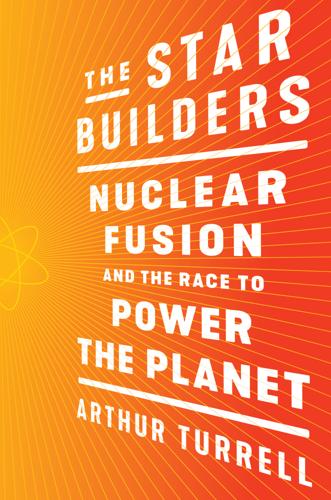
The Star Builders: Nuclear Fusion and the Race to Power the Planet
by
Arthur Turrell
Published 2 Aug 2021
Occasionally a strand of the magnetic spaghetti will develop a kink that extends beyond the surface of the Sun and breaks apart, flicking an arc of plasma into space. Coronal mass ejections can throw plasma right at us at speeds of up to three thousand kilometers (approximately 1,864 miles) per second. Once it hits the Earth’s magnetic field, it’s guided to the poles, creating the Northern or Southern Lights. But when there are huge coronal mass ejections, the Earth’s magnetic field becomes heavily distorted and plasma rains down much closer to the equator, even as far as Cuba. Such ejections can cause serious damage to power grids.6 Ironically, the immense scale of the Sun permits it to be, in some ways, a lousy fusion reactor.
…
It’s a stable, self-correcting system that, like a pendulum, will return to its starting point if disturbed. Of course, stars aren’t completely stable—this is plasma we’re dealing with, after all. Solar prominences, vast arms of plasma on the scale of the largest planets, frequently reach out of the Sun’s surface and into space. The most dramatic examples are coronal mass ejections (the corona is the outer layer of plasma of the Sun). Like the Earth, the Sun has magnetic fields that emanate out from the poles like so many strands of spaghetti. The Sun rotates around 11 percent faster at the equator, with a period of twenty-five days, compared to the mid-latitudes between the poles and the equator.5 This differential rotation stirs up the plasma, which gets caught up in the magnetic fields.
…
See also renewable energy carbon dioxide emissions and, 42 climate change solution using, 216 costs of, 47, 202, 207 deaths per exajoule for, 181 diffusion problem using, 37 early enthusiasm for, 46–47 energy crisis solution using, 36–38 inconsistent energy generation by, 38 land area needed for, 37 Lawrence Livermore National Laboratory use of, 111 public support for using, 40 world energy consumption and, 34 South Korea, superconducting tokamak (KSTAR) in, 184, 185 Soviet Union, tokamak design in, 100–2 space exploration, 213–14, 215 SpaceX, 140, 159 Spherical Tokamak for Energy Production (STEP), 157 spherical tokamaks Chapman on possibility of, 156–57 Culham Centre’s use of, 157, 196 Tokamak Energy’s use of, 140–41, 146, 156, 157, 202 Square Kilometre Array, 77, 202 Stadermann, Michael, 121–22, 123 star builders, 15–26, 216–17 coming of the fusion future and, 25–26 early ideas of, 7–9 government laboratories’ efforts and, 160 net energy gain as goal of, 9 overview of individuals as, 15–25 saving the planet as motivation for, 27–28 star power. See also nuclear fusion battling climate change using, 28 energy crisis rescue plan using, 41–46 Lawson’s theory and equations on possibility of creating, 108–10 nuclear fusion energy and, 47 stars carbon-nitrogen-oxygen (CNO) cycle in, 79–80 coronal mass ejections and, 81–82 death of, and nuclear fusion, 83–86 formation of, 73–77 net energy gain and conditions in, 69, 78–79, 82–86 nuclear fusion in, 77–83 radio telescopes and, 76–77 start-ups advantages of, 144 competition among, 143–44 government funding for, 144 inertial confinement fusion used by, 22 net zero carbon emission policy and, 200 potential for broken promises by, 153 Steenbeck, Max, 96 stellar nucleosynthesis, 79 stellarators.
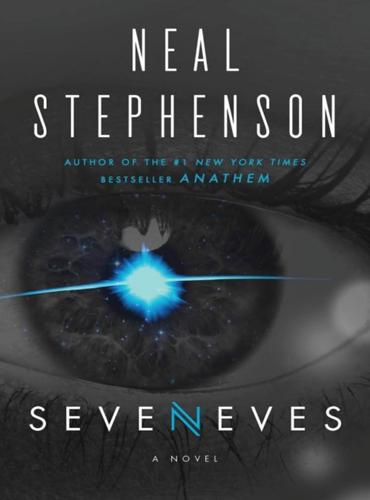
Seveneves
by
Neal Stephenson
Published 19 May 2015
But much could be inferred from the things that the Swarm urgently asked for: mostly propellant, but also the sort of medicine used to treat radiation sickness, blight-resistant strains of food crops, nutrients, spare parts for CO2 scrubbers and for the Stirling engines that supplied power to arklets. In exchange they offered mostly food, which was the only thing they could make that Endurance didn’t already have. Eleven weeks following the Break, a solar flare had occurred, followed by an event known as a coronal mass ejection: a vast release of charged particles hurled out from the sun into the solar system. With its array of sensors, some of which were always pointed toward the sun for just this reason, Endurance had seen the storm coming and had sent a warning message to the Swarm. In those days Endurance had been well inside the protection of the Earth’s magnetosphere.
…
In those days Endurance had been well inside the protection of the Earth’s magnetosphere. That plus the shielding provided by iron and ice had enabled her crew to ride out the storm with little exposure to its radiation. They had no way of knowing, though, whether the Swarm had even received or understood the warning. The danger of coronal mass ejections had been well understood by the Arkitects, who had provided “storm shelters” in each arklet: sleeping bags, in effect, made so that water could be pumped into the space between their inner and outer walls, surrounding the occupant with molecules that were good at absorbing high-energy protons.
…
The scheme was a good one provided the Arkies had at least half an hour’s advance warning and enough water in their arklets’ tanks to fill up all the shelters. They practiced it every so often, as sailors would perform lifeboat drills. But there was a lot that could go wrong, and it seemed unlikely that all eight hundred Arkies had made it through the storm unscathed. In the ensuing three years there had been ten more coronal mass ejections big enough to worry about. Endurance had transmitted a warning to the Swarm in each of those cases but never received an acknowledgment. It was worrisome that the Swarm always seemed to want more water. Since the water of an arklet’s ecosystem was recycled, the only way the arklet could lose it was by expending it as propellant: splitting it into hydrogen and oxygen and feeding it to a thruster.

The Interstellar Age: Inside the Forty-Year Voyager Mission
by
Jim Bell
Published 24 Feb 2015
A few billion pounds of material streams off the sun every second, but the mass lost over time has still been only a minuscule fraction of the overall mass of the sun. Although invisible to our eyes, we can see evidence for the solar wind in the beautiful ion tails of comets, which always point downstream in the solar wind, away from the sun. These somewhat steady breezes are interrupted by occasional gale-force storms of particles called coronal mass ejections—the giant, looping arcs of hot plasma gas that launch off the surface of the sun and send electromagnetic shock waves and sprays of ionizing radiation outward toward the planets. Sometimes these waves and radiation produce glorious auroral displays in Earth’s polar regions, and sometimes they also wreak havoc with electronics in orbiting satellites and surface power grids.
…
During the Jupiter and Saturn flybys, Voyager 1’s PWS instrument could characterize the space environment well because of the waves of energy created by those planets’ powerful, rapidly rotating magnetic fields. But while quietly cruising through the outer heliosphere, there were no such powerful disturbances to create waves in the ionized gas. At least, not often. Every once in a while, though, Gurnett and others knew, an enormous burst of energy from the sun, from a solar flare or so-called coronal mass ejection event, would spew forth out into the solar system, moving outward at high speed and making waves in the plasma. So, if the sun cooperated, perhaps they would see a giant flare make some waves in the Voyager 1 PWS data, and the nature of those waves would tell them whether they were in an environment of low (solar system) plasma density or a high one (interstellar space).
…
See also Jet Propulsion Laboratory (JPL) Bell’s undergraduate experience, 8, 26–33, 46, 163–164, 175–176, 177, 186 Flandro’s graduate work, 42 JPL administration, 50 South Mudd building, 28 Terrile’s graduate work, 59 Callisto, 107, 108, 126–127, 131, 166, 243 Canberra Deep Space Communication facility, 63 Canopus, 113 Cape Canaveral, 51 Carter, Jimmy, 21–22 Casani, John, 20, 77 Cassini, Giovanni, 103 Cassini mission, 25, 51, 67, 129–130, 156, 157, 158–159, 189, 237–238 Celestial mechanics, 43 Ceres, 242, 243 Challenger, 38, 195 Charon, 218 Clear filter, 113 Clouds and cloud-like features Io, 118 Jupiter, 103–104, 108, 128, 129 Neptune, 7, 60, 204, 207, 209 Saturn, 151 Titan, 141 Uranus, 169, 170, 177, 178, 188 Collins, Andy, 157, 230–231 Comets, 245–246, 280 Command Control Subsystem, 52 Communication with extraterrestrial life. See Messages sent into space Computer systems, 52–53, 174 Copyright, 90 Coronal mass ejections, 246 “Cosmic Call” messages, 81 Cosmic rays, 16–17, 247, 259, 260–261 Cosmic Ray Subsystem (CRS), 17, 246–248 Cosmos, 11–12, 24, 91, 231 Cruikshank, Dale, 60 Cryovolcanism, 145 Culberson, John, 132 Curie, Marie, 274 Curie, Pierre, 274 Curiosity rover, 10, 26, 84 Danielson, G.

The Knowledge: How to Rebuild Our World From Scratch
by
Lewis Dartnell
Published 15 Apr 2014
Even if you escape vaporization in the targeted cities, much of the material of the modern world will have been obliterated, and the dust-darkened skies and ground poisoned by fallout would hamper the recovery of agriculture. Just as bad, even though it is not directly lethal, would be an enormous coronal mass ejection from the Sun. A particularly violent solar burp would slam into the magnetic field around our planet, set it ringing like a bell, and induce enormous currents in the electricity distribution wires, destroying transformers and knocking out electrical grids across the planet. The global power blackout would disrupt the pumping of water and gas supplies and the refining of fuel, as well as the production of replacement transformers.
…
To put it another way: What is the critical mass to enable a rapid reboot? There are two extremes on the spectrum of surviving populations, which I will call the “Mad Max” and “I Am Legend” scenarios. If there is an implosion of the technological life support system of modern society but no immediate depopulation (such as would be triggered by a coronal mass ejection), most of the population survives to rapidly consume any remaining resources in fierce competition. This wastes the grace period, and society promptly descends into Mad Max–style barbarism and a subsequent mass depopulation, with little hope of rapidly bouncing back. If, on the other hand, you are the sole survivor in the world, or at least one of a small number of survivors so dispersed that they are unlikely to stumble across one another during their lives, then the notion of rebuilding civilization, or even recovering the human population, is nil.
…
S., vii, 10, 275 Encyclopédie (Diderot), 8, 19 energy and power, 15, 165–85 batteries for, see batteries consumption per person, 166 from fossil fuels, 31, 57–58, 105, 165, 166, 190 generation and distribution of, 178–85 mechanical, 166–74 solar, 13, 47 steam engine for, 170n, 172–73, 182, 197, 201, 277, 290–91 steam turbine for, 182–83, 185, 206–7 thermal, 104–9, 166, 172, 182 water turbine for, 180–82, 181 waterwheel for, 166–68, 167, 170, 171–72, 178–79, 180, 203, 213, 276 windmill for, 46, 169, 170, 171–72, 178–80, 179, 213 see also electricity generators Energy Return on Energy Invested (EROEI), 106n engines: diesel, 188, 190 gasoline, 187, 188 internal combustion, 201–6, 204, 208 steam, 170n, 172–73, 182, 197, 201 Enlightenment, 276 enzymes, 81–82 equinoxes, 259, 261, 265 ethanol, 43, 89, 91, 120, 158, 159, 189–90, 202, 206, 241 ether, 159, 163, 241 evolution, 279 explosives, 104, 110, 116, 118, 122, 235–38, 242, 247 fabrics, see textiles fats and oils, 112, 188 animal, 191 linseed, 219 saponification of, 84, 112–13, 114–15, 211–12 vegetable, 108–9, 188, 190 feather pen, 214 fermentation, 80, 84, 88, 90–91 ferrous sulfate, 241 fertilizers, 57, 58, 69, 70, 72, 73, 76, 77n, 110, 121, 237, 238, 247–48, 250, 278–79 manure, 61, 69, 70, 73–76, 237, 243, 247, 250 Feynman, Richard, 9–10 fire: starting, 34–35 using, 104–5, 123–24 fires, destructive, 28 firewood, 106, 165, 176 fishing, 198 flash paper, 238 flax, 96, 108, 211 Fleming, Alexander, 12, 162, 164 Florey, Howard, 163 flour, 39, 86, 87 flying shuttle, 101 food, 33, 38–41 canned, 40, 92, 291 cereal preparation, 86–91 cooking, 79–81, 124 growing, see agriculture poisoning from, 79–81, 84 pottery vessels for, 80–81, 95, 124–26 spoilage of, 80, 161, 163 food preservation, 80, 81–85, 91–95, 161 by canning, 92, 291 by drying, 82, 91–92 by fermenting, 80, 84 by pickling, 84, 89, 91–92, 118 by refrigeration, 93–95 by salting, 82–83, 91–92 by smoking, 83, 91–92 fool’s gold, 222 forceps, 149–50, 150 fore-and-aft rigging, 198–99 forests, 27, 30, 106 fossil fuels, 31, 57–58, 105, 165, 166, 190 Foucault’s pendulum, 256n Four Quartets (Eliot), 275 foxglove, 155 Frank, Pat, 165 fuels, 41–42, 119, 124 biofuels, 74–75, 119, 191, 206–7, 208 gasification and, 191–93, 192, 194 kerosene, 108–9 fungicide, 118 Gaia hypothesis, 7 Galápagos Islands, 272n galena, 222, 227 Galileo, 172 gallium, 234–35 galls, 214 iron gall ink, 213–14, 218–19 gangs, 21 gas, 165 biogas, 74–75 natural, 44, 173, 185, 191 gasification, 191–93, 192, 194 gasoline, 41, 120, 173, 188–189, 191, 202, 206 alcohol in, 189–90 gasoline engine, 187, 188 gelatin, 116, 161, 241–42 generators, see electricity generators germ theory, 160, 161n glass, 49, 110, 124, 138–44, 235n, 243, 249 lenses, 142–43, 161 mirrors, 240n production of, 138–40 recycling of, 140 windows, 140, 141 glassblowing, 140–41 global warming, 31–32, 45, 294 glue, 116 glycerol, 115–16, 190, 238 Golding, William, 35n golf courses, 47 Goražde, 48–49, 48 GPS navigation devices, 42 grains, 39 Gregorian calendar, 262 guano, 238, 248, 250 guayule, 194–95 guncotton, 238, 241 gunpowder, 112, 236–37, 276 Gutenberg, Johannes, 215, 217, 218, 219 Haber-Bosch process, 57, 232, 248–51 hand washing, 112, 148 harness, 196 Harrison, John, 272, 273 harrow, 62, 63, 195 health care, see medicine heart rate, 155, 156 heat, 105 in canning, 92 herbicides and pesticides, 57, 77n, 279 Hippocrates, 155 hoe, 60, 61 Homo sapiens, 293 horses, 195–98, 197 hourglass, 254–55 houses, 29 Hurricane Katrina, 20–21 hydrocarbons, 104, 108, 188, 249 hydrochloric acid, 121 hydrogen, 193, 232, 233 chloride, 121, 244n in Haber-Bosch process, 57, 232, 248–51 hydrolysis, 211–12 hypothesis, 288 I Am Legend (Matheson), 24 “I Am Legend” scenario, 24 incubators, 150 indigo, 115 inductor, 224–25 industrial chemistry, 242–51, 253, 278–79 Industrial Revolution, 15, 70, 96, 105, 171, 242–43, 276–78, 290 infectious diseases, 112, 147–48 influenzas, 147 ink, 213, 216, 218–20 India, 219 iron gall, 213–14, 218–19 insects, 29 internal combustion engine, 201–6, 204, 208 International Space Station, 30–31 Internet, 50 inverter, 48 iodine, 114, 158, 241 “I, Pencil” (Read), 4 iron, 130, 135–38, 241, 249, 277 cast, 136, 137, 276 disulfide, 222 gall ink, 213–14, 218–19 pig, 136–37 pyrite, 227 smelting, 135–36, 137 sulfate, 214 wrought, 276 Japan, 13 kerosene, 108–9 knowledge, 210, 277, 278, 279–80, 287 lactobacillus bacteria, 88 Laennec, René, 152 lampblack, 219 lamps: arc, 178 electric, 177–78 fluorescent, 142 light bulbs for, 142, 178, 180, 183, 227, 290 oil, 108–9, 184 language, 210 lard, 113, 115 Las Vegas, Nev., 45 latex, 194 lathe, 132–35, 134, 205, 206 latitude, 267–69, 270 lavender, 155 lead sulfide, 222 Leblanc, Nicolas, 244–45 Leeuwenhoek, Antoni Van, 160n legumes, 70, 71, 73, 248 lenses, 142–43, 161 Leonardo da Vinci, 97, 201, 213 light: electric, 177–78 see also lamps light bulbs, 142, 178, 180, 183, 227, 290 lignin, 211, 212 lime, 109–12, 115, 120, 139, 212 mortars, 126, 127–29 quicklime, 110–12, 139, 140, 233, 245 slaked (limewater), 111, 112, 115, 120, 127, 212, 237 limestone, 110, 111, 237, 245 linen, 96, 211 linseed oil, 219 liquified petroleum gas (LPG), 191 livestock, 69, 71–73, 146–47, 247 location, determining, 253–54, 265–74 compass for, 265–66, 276 latitude in, 267–69, 270 longitude in, 267–68, 270–71 sextant for, 269–70, 269, 273 lodestones, 265 London, 28 longitude, 267–68, 270–71 Lord of the Flies (Golding), 22, 35n Los Angeles, Calif., 45 Lovelock, James, 7–8 lye, 115, 116, 190 Mad Max, 2 “Mad Max” scenario, 24 Magellan, Ferdinand, 199 magnesium, 233 magnetism, 12 electromagnetism, 174, 176–77, 184, 220–25 magnetometer, 288 Maillard reaction, 79 maize (corn), 53–54, 66, 67, 84n, 86 malaria, 155, 160 Manhattan, 256n, 266–67, 268, 270 manure, 61, 69, 70, 73–76, 237, 243, 247, 250 materials, 103, 123–44 clay, 124–25 glass, see glass lime mortars, 126, 127–29 metals, see metals plastics, 49–50, 116, 118, 235n, 279 wood, see wood mathematics, 288 Matheson, Richard, 24 Mayan civilization, 145 McCarthy, Cormac, 2 McVeigh, Timothy, 250n measles, 147 measures and units, 287–88 barometer, 141, 144, 284–86 metric system, 282–84 for temperature, see temperature measurement meat, 67, 69, 73 preserving, 82 mechanization, loss of, 195–201, 197 medicine, 6, 144, 145–64 childbirth and neonatal care, 149–50 clinical trials in, 157 examination and diagnosis, 150–54 infectious diseases, 112, 147–48 microbiology, 160–64 surgery, 151, 155, 158–59 medicines, 6, 42–44, 154–57, 279 antibiotics, see antibiotics expiration dates on, 43–44 for pain relief, 155–57, 158–59 medieval Europe, 170–71, 275–76 Mendeleev, Dmitri, 234–35 menthol, 155–56 mercury, 286 Mesopotamia, 138 metals, 49, 104, 110, 130–38 alloys, 130, 195, 235n aluminum, 115n, 132, 133, 174n, 232–33 iron, see iron smelting, 135–36, 137, 140, 249 steel, 29, 49, 124, 130–32, 136–38, 277 welding, 131–32 metalworking, 132–35, 133, 134, 195, 200 methane, 74, 191, 193, 249 methanol, 118–19, 190 metric system, 282–84 microbiology, 160–64 microorganisms, 80, 81, 279, 291 microphone, 225–26 microscope, 141, 143–44, 160–61, 288 milk, 39, 84, 85, 92 Millennium Seed Bank, 54 Miller, Walter M., Jr., 123 millet, 66, 67, 86 mill pond, 168 millstone, 86, 95 mirror, 240n Moldova, 3n morphine, 156 Morse code, 221 mortars, lime, 126, 127–29 motor, car, 173 Napoleon I, Emperor, 282n Napoleon III, Emperor, 233n nature, 279, 287 urban spaces reclaimed by, 26–30, 27, 106 navigation, see location, determining New Orleans, La., 20–21 New York City, 256n, 266–67, 268, 270 nitrates, 237, 238, 243, 247, 248 nitric acid, 121–22, 159, 238, 247, 250 nitrocellulose, 238 nitrogen, 69, 70, 72, 73, 75, 88, 115, 178, 238, 247–51 in Haber-Bosch process, 57, 232, 248–51 nitroglycerin, 238 nitrous oxide, 159, 250 Nobel, Alfred, 238 north pole, 263–65, 264 North Star (Polaris), 263, 269 nuclear war, 22 oats, 60, 66, 67 Off-Gridders, 48 oil, crude, 116, 119–20, 189, 279 oil lamps, 108–9, 184 oil paints, 219 oils, see fats and oils Oklahoma City bombing, 250n opium, 156 oral rehydration therapy (ORT), 148 Oryx and Crake (Atwood), 103 oscillator, 257–58, 271 oscillator circuit, 224–25 oxen, 195, 196 oxidizing agents (oxidants), 104, 236, 238 oxygen, 232, 233, 279 explosives and, 236 “Ozymandias” (Shelley), 209 pain relief, 155–57, 158–59 paints, 118 oil, 219 pandemic, 23 Pantheon, 29 paper, 210–13, 215, 218, 232, 238, 243, 276 pasteurization, 92 pathology, 154 pellagra, 84n Pelton turbine, 181, 181, 182 pen, 214 pendulum, 283 clock, 257–59, 271, 289–90 Foucault’s, 256n penicillin, 12, 162, 163–64 periodic table, 234–35, 242 pesticides and herbicides, 57, 77n, 279 Petri dishes, 161, 162 pharmaceutical compounds, see medicines phones, 3–4, 13, 50–51 phosphorus, 57, 75–76, 110 photography, 104, 114, 122, 235, 238, 239–42 observing stars and, 263, 265 pickling, 84, 89, 91–92, 118 piezoelectric crystal, 226 piston, 173 pitch, 119 plastic bottles, for solar water disinfection, 37–38 plastics, 49–50, 116, 118, 235n, 279 plate tectonics, 279 plow, 58, 60–61, 62, 63, 195 Polaris, 263, 269 polyethylene terephthalate (PET), 50 poppy, 156 population, 24–25 potash, 17, 76, 114, 115, 120, 139, 212, 233, 234, 237, 243–44, 249 potassium, 57, 75, 76, 114, 233, 234 bitartrate, 226 carbonate, 114 hydroxide, 115, 190, 249 nitrate (saltpeter), 237–38, 248, 250 sodium tartrate, 226 potatoes, 60, 65, 67 potter’s wheel, 125, 203, 206 pottery vessels, 80–81, 95, 124–26 POW radios in World War II, 226-27 power, see energy and power Preppers, 21, 33, 48 pressure gauge, 284–85 printing, 214–20, 276 printing press, 12–13, 215–19 prisons, 21–22 propane, 191 pyrites, 121 pyrolysis, 116–20, 117, 192 quicklime (calcium oxide), 110–12, 139, 140, 233, 245 quinine, 155 rack and pinion mechanism, 205 radio, 51, 221–29 amplitude modulation in, 223 earphones or speakers for, 225–26, 227 location determination and, 273 microphone for, 225–26 oscillating circuit in, 224–25 receiver for, 222, 225, 228 transmitter for, 222–23, 225 radioactivity, 279 railways, 188 rapeseed, 60, 109, 171, 190 razor blade rectifier, 227, 228 Read, Leonard E., 4 reaper, 69 rectifier, 227, 230n razor blade, 227, 228 recycling, 49–50 refrigerators, 93–95 Renaissance, 11, 275, 276 rennin, 85 repopulation, 24–25 resin, 219–20 resonance, 224 rhinovirus, 147 rice, 65–66, 66, 67 Road, The (McCarthy), 2 roads, 187–88 Robinson Crusoe (Defoe), 33 Rochelle salt, 226 Roman Empire, 11 Röntgen, Wilhelm, 153 rubber, 193–95 “Ruin, The,” 79 rye, 60, 66, 67, 86 sailing ships, 198–200 salicylic acid, 157 Salon of 1767 (Diderot), 253 salt (sodium chloride), 82, 113, 121, 232, 240, 244, 245, 247 in food preservation, 82–83, 91–92 in oral rehydration therapy, 148 producing, 83 saltpeter, 237–38, 248, 250 saltwort, 244 sand, 138–39, 140, 144 saponification, 84, 112–13, 114–15, 211–12 satellites, 42, 239n sawmill, 171, 206 scales, balance, 283, 284 science, 275–91 experimentation in, 287–89 measures and units in, see measures and units as process, 289 roots of, 280–81 socioeconomic environment and, 277–78 technology and, 289–91 tools of, 281–86, 287 scientific method, 278–81, 286–89 scientific revolution, 259, 276 screw press, 218 scurvy, 157n scythe, 61, 67, 68 sea level, 31, 45 seaweed, 114 seed drill, 62, 64, 195 seismometer, 287 sewage systems, 57 sewage treatment, 75 sextant, 269–70, 269, 273 Shampoo Planet (Coupland), 231 Shelley, Percy Bysshe, 209 shelter, 33, 34–35 ships, 198–200 shipwrecks, 30 Shirky, Clay, 9 sickle, 61, 67, 68 silica, 138, 139–40 silver chloride, 240 silver nitrate, 240 Sirius, 261 smallpox, 147 smelting, 135–36, 137, 140, 249 soap, 112–16, 190, 243 saponification in, 84, 112–13, 114–15, 211–12 social contract, 20–22 soda, 243–47, 246 ash (sodium carbonate), 114, 118, 120, 139, 140, 212, 226, 243, 244, 245 caustic (sodium hydroxide), 115, 190, 212, 232, 233, 234, 243, 244, 244n sodium, 233, 234 acetate, 118 bicarbonate, 245 carbonate (soda ash), 114, 118, 120, 139, 140, 212, 226, 243, 244, 245 chloride, see salt hydroxide (caustic soda), 115, 190, 212, 232, 233, 234, 243, 244, 244n hypochlorite, 212 thiosulfate, 240 soil, 57, 58–64, 70–72, 76, 110 solar power, 13, 47 solar water disinfection (SODIS), 37–38 solstices, 255–56, 261 Solvay process, 245–47, 246 solvents, 119 soot, 219 sorghum, 66, 67 south pole, 264 Soviet Union, 3n, 198n speakers, 225–26 spectrometer, 287 spinning, 96–97, 277 spinning wheel, 97, 97 Staphylococcus, 162 stars, 239n, 261, 262, 263–65, 269, 270 Barnard’s, 262–63, 263 constellations of, 261 latitude and, 268 North (Polaris), 263, 269 steam engine, 170n, 172–73, 182, 197, 201, 277, 290–91 steampunk, 15 steam turbine, 182–83, 185, 206–7 steel, 29, 49, 124, 130–32, 136–38, 277 steering wheel, 205 Stephens, John Lloyd, 145 stereotype, 218n stethoscope, 152 Stonehenge, 256 strontium, 233 substances, 102, 103–22 acids, 82, 84, 92, 104, 113, 116, 120–22 alkalis, 82, 84, 104, 113, 114, 116, 120, 212, 234, 243 lime, see lime soap, see soap for thermal energy, 104–9 wood pyrolysis, 116–20, 117, 192 sugar(s), 82, 89, 90, 190, 240n in oral rehydration therapy, 148 sulfur dioxide, 240 sulfuric acid, 120–22, 159, 214, 238, 241 sulfuryl chloride, 121 Sun, 269, 270 coronal mass ejection from, 22, 24 equinoxes and, 259 proving Earth’s orbit around, 260n solstices and, 255–56 sundial, 256–57, 259–60, 270–71 superglue, 42–43 surgery, 151, 155, 158–59 Svalbard Global Seed Vault, 55, 55 tallow, 191 tea tree oil, 155 technology, 289–91 telegraph, 220–21 telescope, 140, 143, 161 temperature measurement, 285–86 thermometer for, 141, 144, 152, 285–86, 287, 288 Texas City, 250n textiles, 212–13, 232, 276, 277 for clothing, 98–101 linen, 96, 211 spinning yarn for, 96–97, 277 spinning wheel for, 97, 97 weaving, 98, 277 weaving loom for, 98–100, 99, 101–2 thermal energy, 104–9, 166, 172, 182 thermionic emission, 228–29 thermometer, 141, 144, 152, 285–86, 287, 288 Three Gorges dam, 180 threshing, 68 threshing flail, 61 Thwaites, Thomas, 4 time telling, 253–60, 266 calendar for, 253, 260–65 clocks for, see clocks hourglass for, 254–55 sundial for, 256–57, 259–60, 270–71 toaster, 4 tooth fillings, 174n tractor, 63, 197–98 trade, 198 train lines, 188 transformer, 183–84 transmission, car, 204 transport, 185, 187–208 electric vehicles for, 206–7 fuels for, 188–93 gasification and, 191–93, 192, 194 keeping vehicles running, 188–95 and loss of mechanization, 195–201, 197 powered, reinventing, 201–8 roads for, 187–88 rubber for, 193–95 trees, 17 triode, 229 trip hammer, 171, 171, 179, 203, 276 tuberculosis, 147 turpentine, 119, 219–20 type setting, 216–18, 217 urea, 115 urine, 73, 74, 115 vacuum, 284 vacuum tubes, 141–42, 153, 227–30 Varro, Marcus Terentius, 161n vinegar, 84, 118, 120 violence and crime, 20–22 vitamin B3, 84n vitamin D, 72, 84–85 vitriol, 120 voltaic pile, 175, 178 walkie-talkies, 51 Washington, DC, 45 waste, human, 73–75 Waste Land, The (Eliot), vii, 10 water, 81, 103 for apartment buildings, 44–45 destruction caused by, 28–30 water, drinking, 33, 36–38, 109–10, 124, 148 oral rehydration therapy, 148 water clock, 205, 206, 254 water turbine, 180–82, 181 steam, 182–83, 185 waterwheel, 166–68, 167, 170, 171–72, 178–79, 180, 203, 213, 276 Watt, James, 170n weaving, 98, 277 weaving loom, 98–100, 99, 101–2 welding, 131–32 wet collodion process, 241 wheat, 53–54, 55, 60, 66, 67, 68, 70, 71, 73, 86, 89 wheelbarrow, 12, 276 Wikipedia, 9 willow, 155, 157 wind, 168–70 windmill, 46, 169, 170, 171–72, 178–80, 179, 213 windows, 140, 141 winnowing, 68 Wiseman, John “Lofty,” 33 wood, 17, 123–24 ashes, 17, 76, 113–14, 115 charcoal from, 106–7, 116, 124, 135, 184 firewood, 106, 165, 176 gasification of, 191–93 paper from, 211–13 pyrolysis of, 116–20, 117, 192 smoking food with, 83, 91–92 wood alcohol (methanol), 118–19, 190 wool, 96–98 World Health Organization, 37 World War II, POW radios in, 226–27 writing, 210–14, 215 Wyndham, John, 53 X-rays, 12, 141, 153, 221, 239 yeast, 89–91 yogurt, 84, 85, 88 Zeer pot, 93 CREDITS Text 1: Excerpt from Rameau’s Nephew and Other Works by Denis Diderot, translated by Jacques Barzun and Ralph H.

How We'll Live on Mars (TED Books)
by
Stephen Petranek
Published 6 Jul 2015
But solo long-distance sailors who circumnavigate the Earth have shown that the vast majority of problems can easily be addressed by the supplies in a well-stocked medical kit and proper training. Space travel, however, is not ocean sailing, and some explorers may very well fall ill and die. What about radiation? This is still a big bugaboo. The worst solar radiation comes from solar flares and the related coronal mass ejections of radiation from our sun. We have no technologies that can eliminate solar and cosmic radiation, but we can design emergency spaces in interplanetary vehicles that are specially shielded for events like solar flares. And there will be adequate warning to seek a protective habitat until the burst has passed.
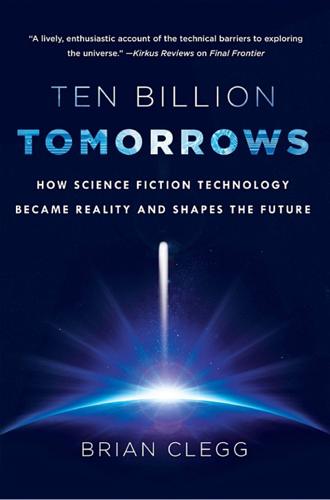
Ten Billion Tomorrows: How Science Fiction Technology Became Reality and Shapes the Future
by
Brian Clegg
Published 8 Dec 2015
On a far larger scale, the Sun is capable of generating a tremendous EMP that could knock out virtually all of the Earth’s electronics, and even damage less-sophisticated electrical devices like electric motors. On a regular, though thankfully not too frequent basis, the Sun undergoes solar flares or coronal mass ejections, where a huge storm on the surface of our neighborhood star propels large amounts of charged material out into space, with the potential of producing a huge EMP on the Earth. Back in 2012, on July 23, there was concern among those in the know about the impact of a huge solar storm. As it happens, the ejection occurred in a direction away from the Earth, but had it come just a few days earlier, we would have felt its full impact.
…
It would, at least in the short term, be like a return to the Dark Ages. Luckily, such catastrophic solar events don’t happen very often. The most recent recorded solar EMP that did make it to the Earth was the so-called Carrington event of 1859, named after British astronomer Richard Carrington, who witnessed the original flare on the Sun. Several powerful coronal mass ejections hit the Earth at pretty much the same time. Back then, of course, dependence on electrical devices was much lower than it is today, but the primitive electric telegraph lines of the time, sometimes called the Victorian Internet, had high currents induced in them, causing sparking, setting fire to some telegraph offices and bringing the whole network down.
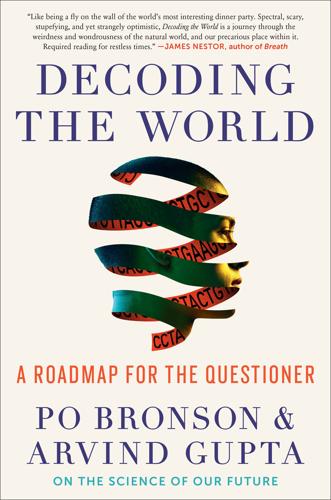
Decoding the World: A Roadmap for the Questioner
by
Po Bronson
Published 14 Jul 2020
This antenna field monitors the entire sky for auroras from other planets. Much like the Aurora Borealis—but in this case it would be Aurora Teegarden b, or Aurora Kepler-47c. If you were on those planets, you would see northern lights; what Hallinan’s antenna hears is just a blip. But it’s a telling blip, because auroras are caused by coronal mass ejections sparking into a planet’s atmosphere. Atmospheres are essential for protecting life on other planets because they block highly energetic solar radiation that would otherwise tear DNA apart. If Hallinan’s array picks up an aurora, they’ll know life could be there. In fact, the planet we talk most about visiting, Mars, is a cautionary tale.
…
But it lost its magnetic field when its molten core died out. Gravity plummeted, and the solar wind blew away its atmosphere. Hammered by gamma rays, life on the surface of Mars disappeared from sight. So even if we create a colony on Mars, we’d have to live under a lead shield, or be torn apart by radiation. Regularly, the sun fires off coronal mass ejections, a billion tons of plasma hurtled our way at more than a million miles per hour, Hallinan describes. There’s an important difference between Hallinan’s aurora scanner and going to Finland hoping to spot the northern lights. He’s removed any need to be in the right place at the right time.

Infinity in the Palm of Your Hand: Fifty Wonders That Reveal an Extraordinary Universe
by
Marcus Chown
Published 22 Apr 2019
Understanding the sun is more than a mere academic activity. Our very survival on Earth may depend on predicting the space weather created by the nearest star. Studies of other sun-like stars reveal that they can launch mega-flares—though admittedly rarely—that are quite capable of frying a planet like the earth. A more serious concern is Coronal Mass Ejections (CMEs), which should more accurately be called “coronal magnetic eruptions.” First recognized in the 1970s, these are missile-like ejections into space of vast amounts of solar plasma and magnetic fields. We are talking about something of roughly the mass of Mount Everest hurled into space at five hundred times the speed of a passenger jet.

Global Catastrophic Risks
by
Nick Bostrom
and
Milan M. Cirkovic
Published 2 Jul 2008
These include variation in the Earth's eccentricity, tilt of the Earth's axis relative to the normal to the plane of the ecliptic and precession of the Earth's axis. Milutin Milankovitch, the Serbian astronomer, is generally credited with Fig. 1 2 . 1 The intense solar flare of 4 November 2003. A giant sun spot region lashed out with an intense solar flare followed by a large coronal mass ejection (CME) on 4 November 2003. The flare itself is seen here at the lower right in an extreme ultraviolet image from the sun-staring SOHO spacecraft's camera. This giant flare was among the most powerful ever recorded since the 1970s, the third such historic blast from AR10486 within two weeks.
…
In the unlikely event that all the magnetic field energy in the solar atmosphere is radiated in a single solar flare, the solar flare energy cannot exceed � B2 R 3 f 1 2 33 erg where B � 50 Gauss i s the strength o f the sun's dipole � 1 .4 x 10 surface magnetic field and R. = 7 x 10 10 em is the solar radius. Even this energy is only approximately one-third of the total energy emitted by the sun every second. Thus, individual solar flares are not energetic enough to cause global catastrophes on planet Earth. However, solar flares and associated coronal mass ejections strongly influence our local space weather. They produce streams of highly energetic particles in the solar wind and the Earth's magnetosphere that can present radiation hazards to spacecraft and astronauts. The soft X-ray flux from solar flares increases the ionization of the upper atmosphere, which can interfere with short-wave radio communication, and can increase the drag on low orbiting satellites, leading to orbital decay.
…
The Cosmic Winter 235 codes of conduct, biotechnology 462 cognitive biases 10 Cohn, N . , The Pursuit ofMillenialism: Revolutionary Millenarians and Mystical Anarchists of the Middle Ages 86 'cold' confirmation bias 99 cold degenerate stars, long-term evolution 42 Cold War vii, 20, 381-2, 490 collateral damage 1 7 3 colonization minimum population 369-70 of other planets 67-8 as source of evolutionary change 55 Combs, B. and Slovic, P. 92 535 comets 14- 1 5 , 226-7, 229 anthropic bias 127 as cause of mass extinctions 255, 256 Comet Shoemaker-Levy, collision with Jupiter 240 contemporary risk 233-4 Oort cloud 225 as source of dust showers 232, 233 as source of meteor showers 228 uncertainties 234-5 communism 319 amillenialism 76 ideology 5 14 Communist rule, Soviet Union 505, 506 stability 507-8 complexity science 1 8 1 compound failure modes 1 61-2 Comprehensive Test Ban Treaty (1996) 394 computer-based catastrophes, perceived risk 168 computer chips manufacture 482, 483 proof of validity 3 17-18 computers impact of molecular manufacturing 489 reversible 1 39, 359 computing hardware, A I 328-9 conditional expectations, P M R M 156, 1 5 7 conditional expected value, P M R M 158 confirmation bias 98-101 conflict resolution 400 conjunction fallacy 95-8, 329 consumption 297 see also tuberculosis containment of epidemics 472-3 contamination effects, cognitive j udgement 102-4 Convention on the Physical Protection of Nuclear Material 438-9 copulas 173 Cordesman, A. 407 core-collapse supernovae 245, 2 5 1 coronal mass ejections (CMEs) 239, 243 cosmic hazards 14-1 5 , 238, 258-9 as cause of mass extinctions 256-7 changes in solar luminosity 238-42 solar extinction 245 solar flares 242-3 Earth magnetic field reversals 250 passage through Galactic spiral arms 2 5 1-2 536 Index cosmic hazards (Continued) see also asteroid strikes; comets; cosmic rays; gamma-ray bursts; supernovae cosmic perspective xi cosmic rays 18, 243, 247, 248-50, 259, 356-7 from gamma-ray bursts 252-5 from nearby supernovae 252 in Galactic spiral arms 2 5 1 cosmic risk 3 , 4 cosmic sterilization rate 128 The Cosmic Winter, Clube, S.V.

Red Rover: Inside the Story of Robotic Space Exploration, From Genesis to the Mars Rover Curiosity
by
Roger Wiens
Published 12 Mar 2013
*There are three different types of solar wind: “slow” wind, which travels a little under 1 million miles per hour and predominates in the ecliptic, that is, where the planets orbit; “fast” wind, which goes nearly 2 million miles per hour and is characteristic of the solar wind near the solar poles, but sometimes extends to the ecliptic; and a third, transient type called “coronal mass ejections,” which at times interrupts the other two types of flow. The compositions of these three solar-wind types were thought to differ slightly, with the fast wind being the most representative of the Sun’s composition, but we wanted to make sure that Genesis could answer questions about the differences between them.
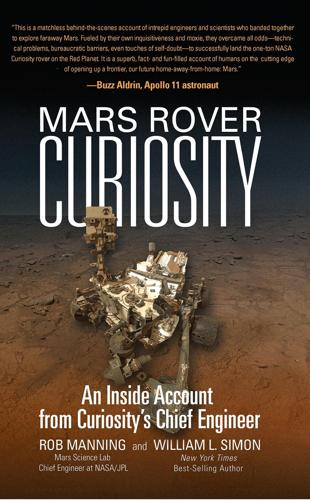
Mars Rover Curiosity: An Inside Account From Curiosity's Chief Engineer
by
Rob Manning
and
William L. Simon
Published 20 Oct 2014
On the first day of this ORT, the team arrived for what they were told was the morning of August 2, only a few days before landing. They settled into the routines. I thought it would be good to start the morning with a red herring. I asked JPL’s space radiation expert, Martin Ratliff, to send an urgent email to the cruise mission managers with news of an impending huge “coronal mass ejection” from the sun: a huge solar flare heading toward Mars. Martin’s warning to the team was a heads-up. A genuine large solar flare would bring a real risk that the rover electronics would suffer “bit flips,” with ones and zeros stored in the computer getting scrambled. (In fact, this actually did happen to both Spirit and Opportunity a couple of months before they landed.)

Exoplanets: Hidden Worlds and the Quest for Extraterrestrial Life
by
Donald Goldsmith
Published 9 Sep 2018
The Hazards and Advantages of Living around a Star Life on our planet depends almost entirely on the sun’s steady energy output, which has shown an impressive constancy over the past millions of years. The exceptions to this statement appear primarily in short-term outbursts known as “solar flares,” sudden eruptions from regions near the sun’s surface. Solar flares often create “coronal mass ejections,” or CMEs, typically accompanied by intense x-ray emission, that shoot streams of charged particles into space. CMEs pose a definite hazard for our life on Earth, not from a significant increase in the sun’s brightness, which does not occur, but from the ejected particles that reach the Earth a few days later.
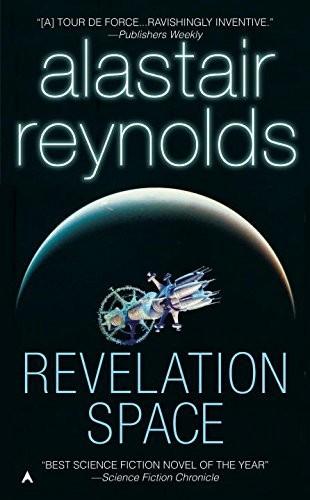
Revelation Space
by
Alastair Reynolds
Published 1 Jan 2000
He had built routines into Sylveste's eyes to accommodate this need, but it had not been within Falkender's gift to restore everything. Still, this much was clear: The flare-watch in East Nekhebet had picked up an energy pulse, much brighter than anything seen previously. Briefly, there was the worrying possibility that Delta Pavonis was about to repeat the flare which had wiped out the Amarantin: the vast coronal mass ejection known as the Event. But closer examination revealed that the flare did not originate from the star, but rather from something several light-hours beyond it, on the edge of the system. Analysis of the spectral pattern of the gamma-ray flash indicated that it was subject to a small but measurable Doppler shift; a few per cent of the speed of light.
…
But sooner or later there comes a point when it decides that it has all the intelligence it needs. And then — only then — it acts.' Now the three of them were on common ground. 'Which is why the Amarantin died out,' Pascale said, wonderingly. 'It did something to their sun; tampered with it, triggered something like a vast coronal mass ejection; just enough to scour Resurgam clean of life, and cause a phase of cometaryinfall for a few hundred thousand years.' 'Ordinarily the Inhibitors wouldn't go to such drastic lengths,' Volyova said. 'But in this case they'd left it far too late for anything less. And even that wasn't sufficient, of course; the Banished were already spaceborn.
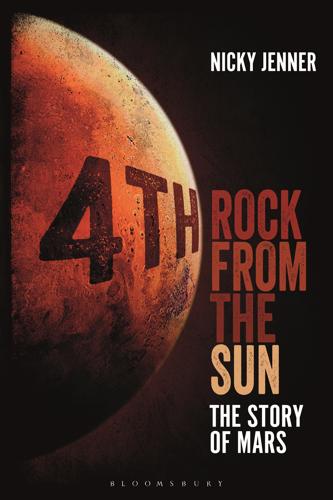
4th Rock From the Sun: The Story of Mars
by
Nicky Jenner
Published 5 Apr 2017
The Sun’s magnetic field is very fluid and, as a rough-and-ready analogy, winds up tighter and tighter over time, tying itself in knots. Occasionally it will twist itself up so tightly that it effectively snaps, releasing a huge burst of radiation in the form of a solar flare or more sizeable ‘coronal mass ejection’. These are so dangerous that space-based capsules such as the International Space Station (ISS) have special insulated rooms that astronauts can shelter in if it looks like a solar ejection is headed their way. Cosmic rays, on the other hand, are more exotic. They are flung into our Solar System from far beyond our little patch of space.
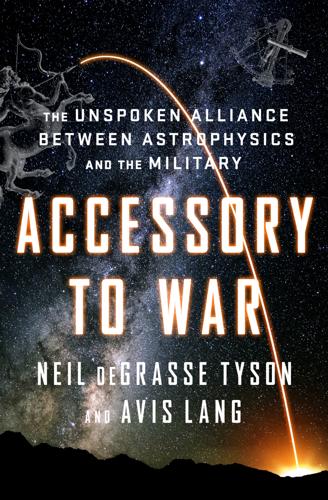
Accessory to War: The Unspoken Alliance Between Astrophysics and the Military
by
Neil Degrasse Tyson
and
Avis Lang
Published 10 Sep 2018
India, though still afflicted by what its first post-Independence prime minister, Jawaharlal Nehru, called “the problems of hunger, insanitation, and illiteracy”—problems that China has been more successful in alleviating—has had a space agency since 1969. India’s emphasis has been more civil than military, with a dash of scientific research: the Indian Space Research Organisation (ISRO) plans, for instance, to study the Sun’s coronal mass ejections and their impact on space weather. But as the space program’s founder, physicist and industrialist Vikram Sarabhai, put it, “If we are to play a meaningful role nationally, and in the community of nations, we must be second to none in the application of advanced technologies to the real problems of man and society.”
…
MAKING WAR, SEEKING PEACE 1.See the UCS Satellite Database, compiled and updated approximately four times per year by the Union of Concerned Scientists, www.ucsusa.org/nuclear-weapons/space-weapons/satellite-database# (accessed Mar. 15, 2018). 2.On May 19, 1998, a satellite named Galaxy IV, operated by PanAmSat, suddenly failed, cutting off tens of millions—the vast majority—of the pagers in the United States, as well as local affiliates of National Public Radio, certain kinds of credit-card processing, and other forms of communication. A couple of weeks of coronal mass ejections and solar flares preceded the event; some scientists attribute the failure to the effects of the solar storms, others to peculiarities of the tin solder used in key components. “PanAmSat Satellite Outage Interrupts Pager, Television Service in the U.S.,” Wall Street Journal, May 20, 1998; Lawrence Zuckerman, “Satellite Failure Is Rare, and Therefore Unsettling,” New York Times, May 21, 1998; “A Week of Solar Blasts: The Space Weather Event of May 1998,” pwg.gsfc.nasa.gov/istp/outreach/events/98/ (accessed Apr. 22, 2017).
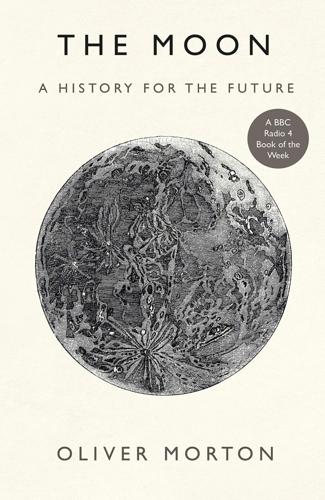
The Moon: A History for the Future
by
Oliver Morton
Published 1 May 2019
A structure that is heated to well above 100°C and then chilled to liquid-nitrogen temperatures every month faces an alarming amount of stress and strain. And the surface is peppered not just with micrometeoroids but also with cosmic rays—high-energy protons—that the Earth is protected from by its magnetosphere. Worse, there are barrages of protons thrown off the Sun by events known as coronal mass ejections. Over a 100-day stay on the Moon’s surface, even one spent in a hab shielded against background radiation of cosmic rays, astronauts would be exposed to a 13% chance of a “solar proton event”, as they are known, strong enough to raise their cancer risk significantly. There would be a 5% chance of one strong enough to cause prompt radiation sickness, and a 0.5% risk of one that would be fatal.

Our Moon: How Earth's Celestial Companion Transformed the Planet, Guided Evolution, and Made Us Who We Are
by
Rebecca Boyle
Published 16 Jan 2024
Maybe life showed up right away, and simply stayed boring for longer than we thought before evolving into ferns and dinosaurs and us. Or perhaps the young Sun played some role in life’s earliest days. The Moon might be able to answer that question, too. The Sun’s rate of rotation during that first boring billion years of Earth’s existence would have affected the timing and frequency of solar outbursts, like flares and coronal mass ejections, clouds of radiation the Sun flings toward the planets at random. These emanations could have influenced the evolution of life. Perhaps they introduced a spark of radiation into Darwin’s warm little pools, or ripped and knitted together the proteins that eventually built DNA, or sterilized any early attempt at cell building or replication.
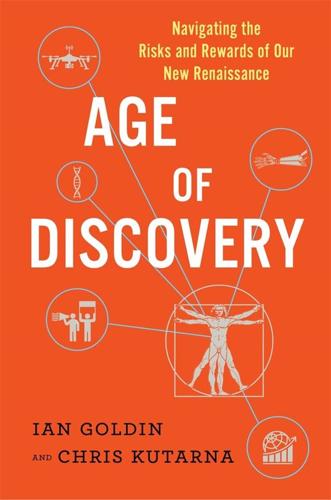
Age of Discovery: Navigating the Risks and Rewards of Our New Renaissance
by
Ian Goldin
and
Chris Kutarna
Published 23 May 2016
All else being equal, concentrations also mean that when something fails, the costs are likely to be higher and the consequences more severe for more people. Imagine two identical solar flares knocking out the Internet planet-wide, one in 1990, the other today. The first would have frustrated some military researchers and the physics community. The latter would be a global catastrophe. (This is more than a thought experiment. In July 2012, a coronal mass ejection [CME] from the sun tore directly through Earth’s orbital path, missing our planet by only one week. The US National Academy of Sciences estimated that, had the CME hit, the damages to planetary electrical systems might have exceeded $2 trillion—more than 40 times the cost of the costliest hurricane in US history [Katrina].)9 When syphilis struck the last Renaissance, one of the reasons it hit so fast and so hard was that people had begun to concentrate more in towns and cities.

The Three-Body Problem (Remembrance of Earth's Past)
by
Cixin Liu
Published 11 Nov 2014
In reality, electromagnetic radiation from the sun is only stable within the limited range from near-ultraviolet to mid-infrared (including visible light). In other ranges, the radiation is quite volatile and unpredictable. To set the right expectations, Ye made it clear in her first research report that during periods of intense solar activity—sunspots, solar flares, coronal mass ejections, and so on—it was impossible to eliminate solar interference. Thus, her research target was limited to radiation within the frequency ranges monitored by Red Coast during periods of normal solar activity. Research conditions at the base weren’t too bad. The library could obtain foreign-language materials related to the topic, including timely European and American academic journals.
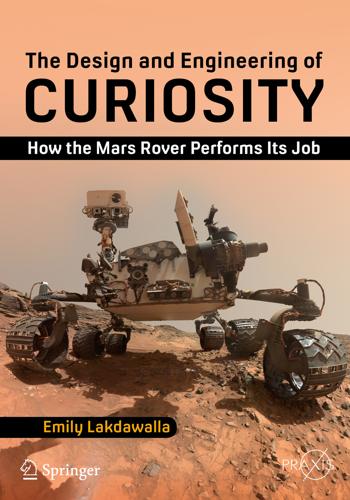
The Design and Engineering of Curiosity: How the Mars Rover Performs Its Job
by
Emily Lakdawalla
Published 5 Mar 2018
Most of them (85–90%) are protons, and most of the rest are helium nuclei; electrons and heavier nuclei account for 1% each. The flux of galactic cosmic rays varies with solar activity: there are fewer cosmic rays near solar maximum, when the heliosphere pushes outwards and provides the solar system more protection from cosmic rays. Solar energetic particles originate in the solar corona along with flares and coronal mass ejections. Solar events can produce 10,000 times more particles than the normal background rate. During big solar events, solar particles can overwhelm galactic cosmic rays as the primary source of energetic particles at the surface of Mars, but only for brief periods of a few hours to a few days. Mars and Earth will usually not see the same fluxes of solar particles, because they usually see the Sun from different directions.
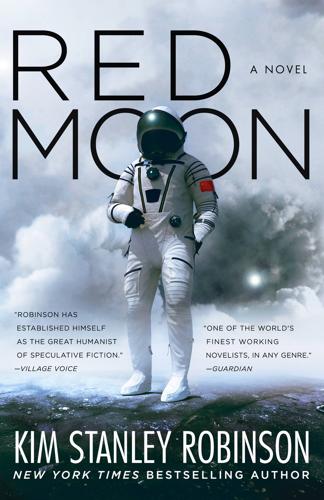
Red Moon
by
Kim Stanley Robinson
Published 22 Oct 2018
Could be he just thinks he is safer with me than anywhere else! They laughed hard at that idea. From the fire, the frying pan looks cool. At a certain point Xuanzang and Ah Q consulted their dashboard closely. “Ah shit,” Ah Q said. “What?” Qi asked. “A big solar storm is coming,” Xuanzang replied, looking unhappy. “X5 or 6, meaning a big coronal mass ejection. It was predicted to miss the moon, but that just got updated, looks like it expanded or something. The plasma’s coming at us fast. It’ll hit in about a half an hour. We’re going to have to do a swanwick.” “What’s that?” “We have to suit up and get under the rover. Storm this big, we need all the protection we can get.

Aurora
by
Kim Stanley Robinson
Published 6 Jul 2015
Jochi is looking at a screen with a filtered view and hooting with astonishment, the great convex plane of burning thunderheads is threshing under us, flailing this way and that in swirling currents, truly impressive, great jets of magnetized burning gas dolphining up to right and left of us; we must hope not to run into any such coronal mass ejections, which often enough reach out to this distance from the solar surface, but for now we flit through them, hooting for joy. And I have to admit it is a fearful joy, oh very fearful, and yet I feel it most as joy, a joy in my task accomplished, and whatever happens I am here seeing this most amazing sight, well past perihelion now, everything passing so fast there is not enough time, my skin still white-hot but holding firm, holding firm in a universe where life means something; and inside the ship Jochi and the various animals and plants, and the parts of a world that make me a conscious being, are all functioning, and more than that, existing in a veritable ecstasy now, a true happiness, as if sailing in the heart of a royal storm, as if together we were Shadrach, Meshach, and Abednego, alive and well in the fiery furnace.

The Last Dance
by
Martin L. Shoemaker
Published 2 Nov 2019
I want to see what the Downies know.” Downies was a scurrilous slur against we who came from Earth, and it spurred the students to speak out. Voices came from around the room: “Heat.” “Energy.” “Vacuum.” “Asteroids.” “Cosmic rays.” I even spoke up with what I thought was a more sophisticated answer: “Coronal mass ejections.” But Fontes only glared at me as he glared at the others. Then on the far edge of the crowd, a short, red-haired American with a neatly trimmed beard spoke in a loud, rough baritone that cut through the clamor: “Ignorance and human incompetence.” We all paused to see how Fontes would react, and we knew from his smile that the American had scored.